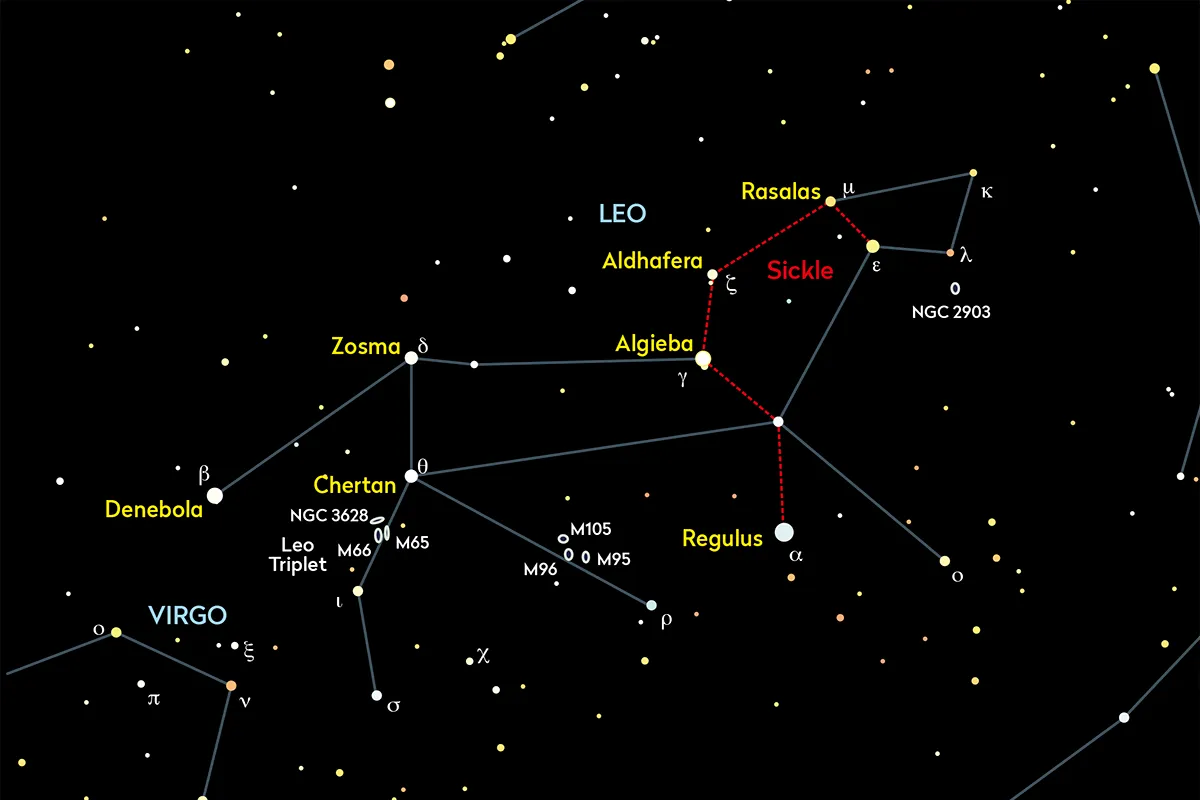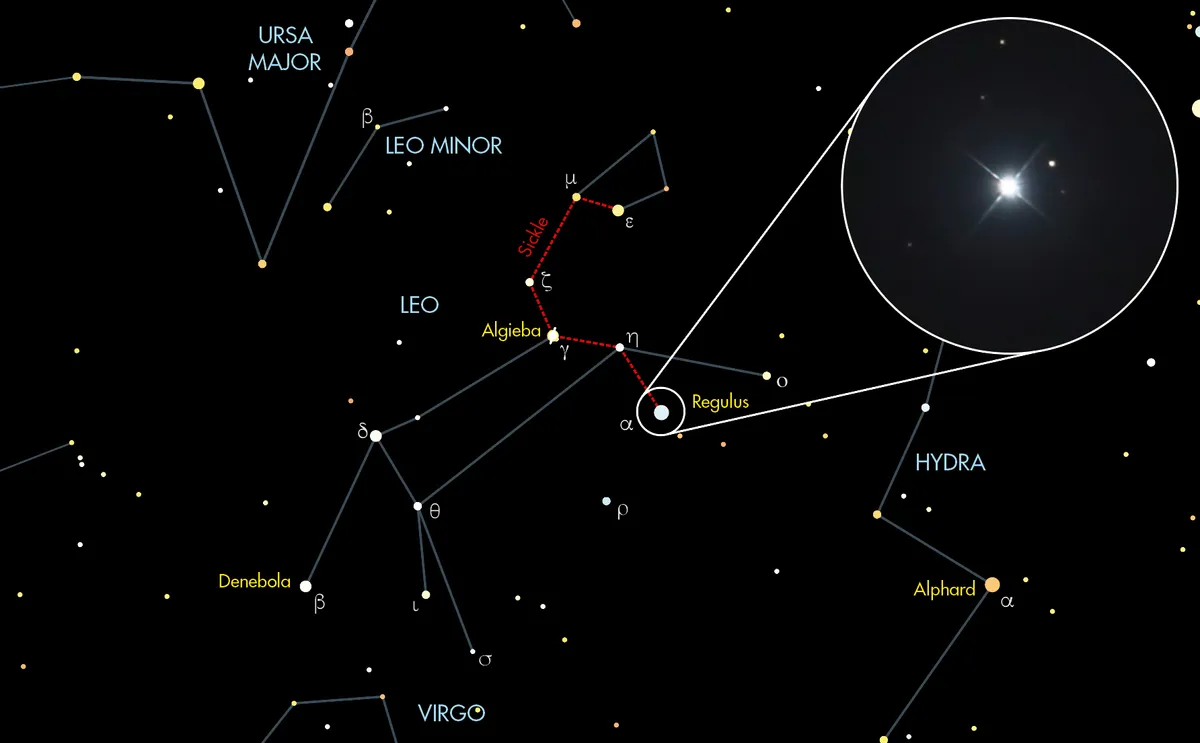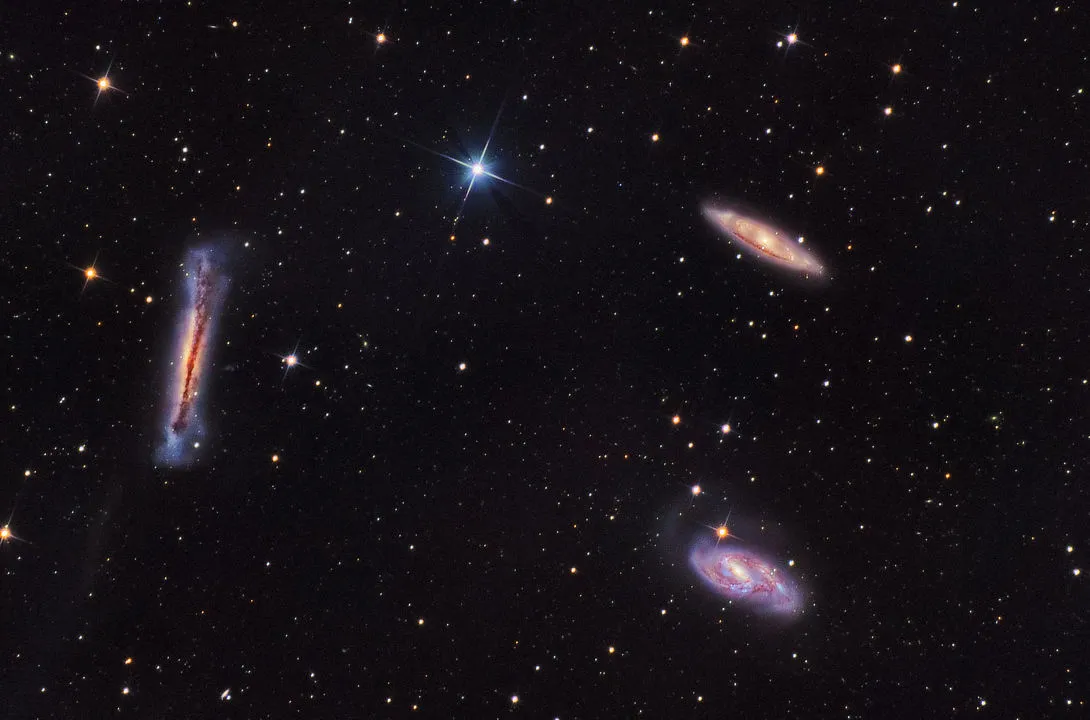If you look halfway up in the sky above the south-western horizon as twilight ends during springtime, you will see Leo, probably the major spring constellation for northern hemisphere observers.
Here we'll look at what makes Leo such a beautiful constellation, worthy of our attention.

Easy to see
Covering some 947 square degrees, Leo is the 12th largest constellation in the sky.
Four of its nine brightest stars are 1st or 2nd magnitude, making it easy for beginners to find when they are starting to learn the sky.
The Sickle

Sandwiched between the less conspicuous constellations of Virgo to its east and Cancer to its west, the constellation Leo is immediately recognisable because it contains one of the most famous and most obvious asterisms in the whole of the night sky.
A back-to-front question mark of six bright stars, known throughout the ages as The Sickle.
If you do not know what a sickle is, a sickle is an old agricultural, cutting tool with a wickedly-sharp blade, used for cutting crops.
However, sickles are seen so rarely these days – unless you are catching up on Poldark – that most people see a fish hook, or the hook of a coat hanger, or even the hooked artificial hand of Captain Hook.
Mythology

Astronomers know, of course, that this pattern of stars is supposed to represent the front of a reclining, noble lion, because the constellation Leo is named after the Nemean lion killed by the hero Hercules in Greek mythology.
Killing the fearsome creature was one of Hercules’s 12 labours, along with slaying the monstrous Hydra (the constellation denoted by its brightest star Alphard) and, rather less challengingly, cleaning out the Augean stables.
Regulus and Denebola

Leo's brightest star, magnitude 1.34 Regulus, is the 21st brightest star in the sky.
A class B8 blue giant star, it lies 77 light years from Earth and its name means 'The Little King'.
At the very other end of the constellation, marking the lion’s tail, Leo’s second brightest star, Denebola, 'The Tail of the Lion', is a class A3 star some 36 lightyears away.
It is a young star, around only 400 million years old, which, like Vega and Beta Pictoris, has been found to have a disc of cool dust swirling around it - a solar system in the making.
Once you've found it, see if you can locate Zosma, the lion's rump.
Leo galaxies

Leo contains five Messier objects, M65, M66, M95, M96 and M 105, all of which are galaxies.
Together with NGC 3628, M65 and M66 form the Leo Triplet, a tight mini-cluster of three reasonably bright galaxies which is hugely popular with observers and astrophotographers alike.
Leonid meteor shower

The constellation Leo is also the area of the sky in which you'll see one of the most popular meteor showers, the Leonid meteor shower.
Mid-November every year meteors, or shooting stars, appear to zip out of the hook of the Sickle in Leo.
These are caused by dusty grains shaken from the icy nucleus of comet Tempel-Tuttle burning up in Earth’s atmosphere.
Most years the Leonids is a quite modest shower, with a peak of around only 10-15/hr, but every 33 years or so the shower turns into a storm, producing thousands of meteors.
This last happened in 1999-2001, when 3000 meteors per hour were seen for a short time, many of them stunningly-bright fireballs.
But this was a poor show compared to the Great Leonid Meteor Storm of 1833, when an estimated 100,000 meteors per hour rained from the sky.
Will we see another storm in a decade’s time? We’ll have to cross our fingers and wait and see.
Either way, if you're stargazing on a spring evening, Leo is well worth a look.
What are your favourite targets in the Leo constellation? Let us know by emailing contactus@skyatnightmagazine.com

